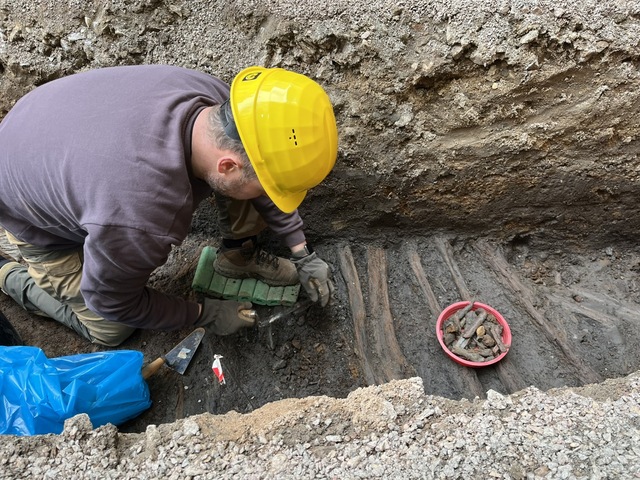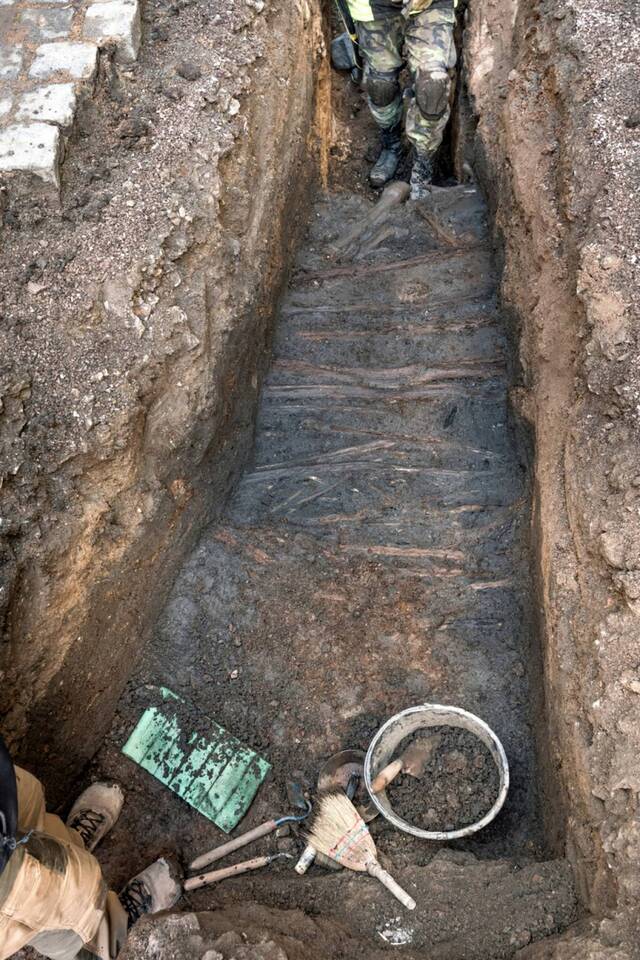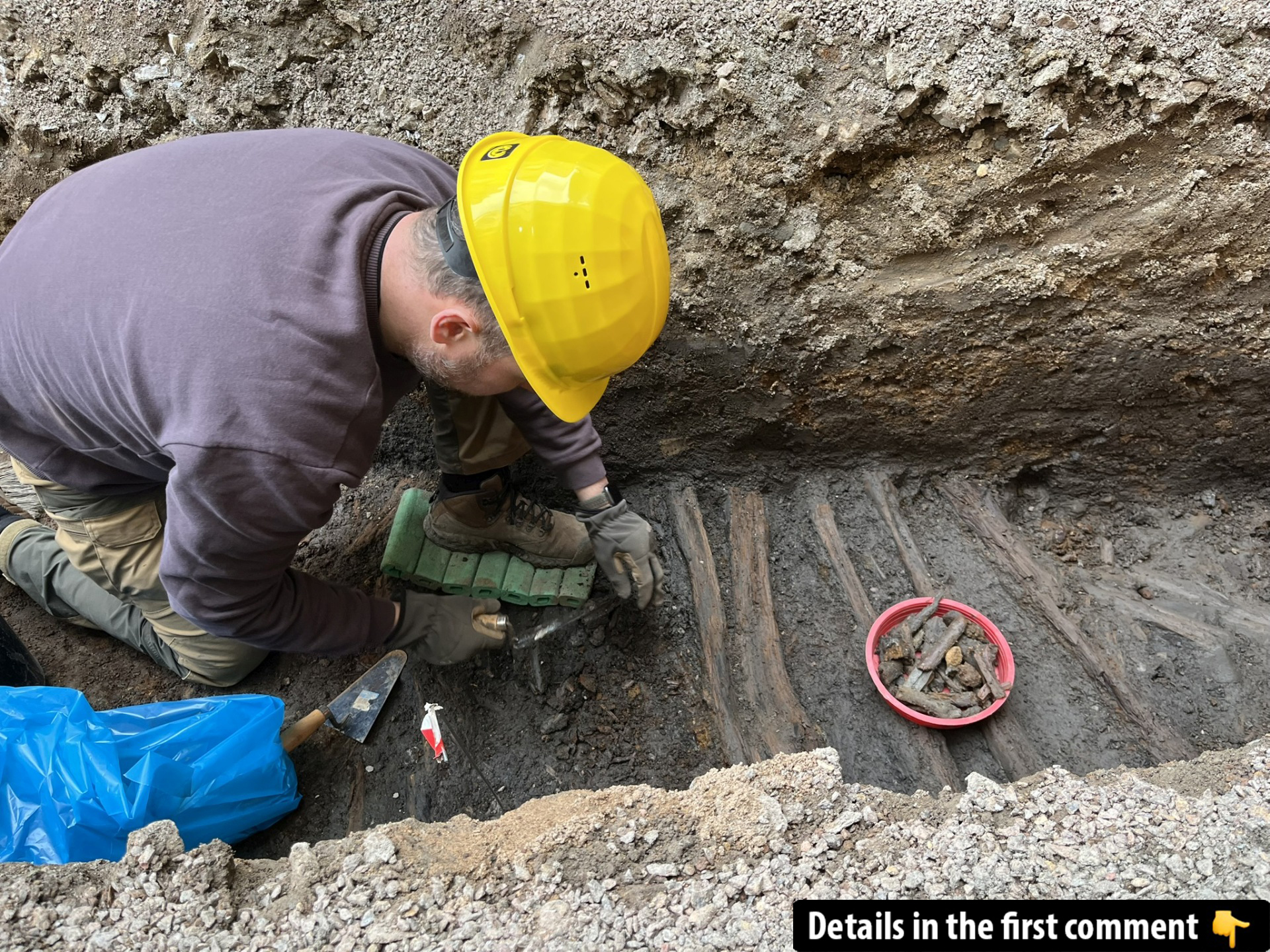In the heart of Pardubice, Czechia, a remarkable discovery has recently been made that sheds light on the medieval past of this historic city. During a renovation project near the Green Gate, archaeologists uncovered a 600-year-old wooden street, offering a rare glimpse into the past. The find not only offers insight into the city’s early infrastructure but also challenges how we perceive medieval urban life. This discovery, in a city that has long been marked by its Renaissance architecture, helps us understand the importance of medieval roads and their construction techniques, such as the ancient Czech “hatě” method, used to stabilize roads in flooded or swampy terrain.
The Green Gate: A Historic Landmark
The Green Gate, a structure often misunderstood due to its name, has long been an iconic part of Pardubice. Despite its name, the Green Gate is not green, nor is it a gate in the traditional sense. Rather, it is a historic brown stone tower with a cream-colored tunnel that once served as an entrance to the city. The Green Gate has stood as a symbol of the city’s rich history, with its origins deeply intertwined with the medieval and Renaissance periods. Built after a devastating fire in 1538, the gate is part of the city’s fortifications, which were reconstructed during a time when the city was being reborn in the Italian Renaissance style.

However, while this gate has been admired for its architectural significance, it was only recently that archaeologists working under the Green Gate unearthed an extraordinary find: a 600-year-old wooden street. This discovery was made as part of ongoing repair work on the Green Gate, marking a significant milestone in understanding Pardubice’s ancient infrastructure.
Video
Watch the video to explore the discovery of a medieval kitchen in the Czech Republic! Don’t miss this exciting archaeological find and its historical insights.
The Discovery of the 600-Year-Old Wooden Road
The excavations revealed a section of a medieval street hidden beneath the cobblestone surface of today’s modern road. A layer of carefully arranged wooden sticks was found five feet below ground level. This wooden road, which looks like a dense woodpile, dates back to the 14th century. Archaeologists believe this section may have been part of a larger road network, though only a small part of it remains. The preservation of this wooden street is extraordinary, as organic materials like wood rarely survive for centuries unless preserved in specific conditions such as permafrost or a highly anaerobic environment.


The street was constructed using logs, branches, and sticks laid transversely and packed with river gravel. This was a common technique in medieval Czechia, known as the “hatě” method, used to stabilize roads in areas prone to flooding or swampy conditions. The wood found in the street has been remarkably well-preserved, providing an unprecedented look at the building methods used by medieval engineers.
Understanding the Hatě Technique
The hatě technique involved laying logs and branches across a muddy or swampy landscape to create a stable foundation for roads. Over time, the road would be packed with materials like river gravel, further ensuring its stability and durability. The technique was particularly useful in areas where the ground was soft and prone to flooding, as it allowed for the construction of roads that could support foot traffic and wagons. The fact that such an intricate system of road construction was used in medieval times highlights the advanced engineering skills of the people living in Pardubice during this period.
The use of organic materials like wood and sticks to create stable roads also speaks to the resourcefulness of medieval societies. At a time when modern construction materials like asphalt and concrete were unavailable, the use of locally sourced materials was essential for creating functional urban infrastructure.

The Role of Pardubice in Medieval Czechia
Pardubice’s early history remains somewhat enigmatic, though recent archaeological finds are helping to fill in the gaps. The first written mention of the city dates back to 1295 when it was part of a papal document concerning the establishment of a religious order for a local church. However, it was not until 1340 that Pardubice was granted city rights, elevating it from a small village to an important urban center in the region.
The city’s growth continued through the Middle Ages, with the fortifications surrounding the city being built during this time. These early structures were essential in protecting the city from invasions and other threats. By the late 15th century, under the rule of the Pernštejn family, Pardubice became an even more significant political and cultural center. The family’s reconstruction efforts during this period helped shape the city’s appearance and laid the foundations for the Renaissance city we see today.
However, it was the fire of 1538 that reshaped Pardubice once again. The fire devastated much of the medieval town, prompting a complete overhaul of its architecture. The Green Gate, which survives today, is a part of this Renaissance reconstruction, as are many of the city’s other structures. Despite the fire’s destructive force, archaeological discoveries like the medieval wooden street offer a window into Pardubice’s medieval past, revealing elements of the city’s original layout that were lost to the flames.
The Impact of the 1538 Fire on Pardubice
The fire of 1538 was a pivotal moment in Pardubice’s history, destroying much of the medieval settlement and leading to its eventual Renaissance rebuilding. The fire not only destroyed homes and buildings but also the original roadways, which would have been part of the medieval infrastructure. The reconstruction efforts that followed led to the creation of a more modern city, characterized by two-story townhomes, wide city squares, and an elegant Italian Renaissance style.
It is only through discoveries like the medieval wooden street that we can begin to piece together what the city looked like before the fire. While most of the medieval structures were lost, some features, like the wooden road beneath Zelenobranská Street, have survived, offering vital clues about the city’s original layout.
Connections to the Renaissance and Medieval Settlements
The contrast between the medieval and Renaissance periods in Pardubice is striking. While the Renaissance rebuilding brought a new architectural style to the city, it also resulted in the loss of many medieval features, including the roads that once connected the city’s various districts. However, the discovery of the 600-year-old wooden road near the Green Gate challenges the perception that the medieval city was completely wiped away by the fire.
The survival of this street section offers a rare glimpse into the everyday life of medieval Pardubice, providing valuable insight into the engineering techniques and materials used during that time. The discovery of other medieval remnants, such as fortification walls and ceramic fragments, also strengthens the connection between the city’s medieval and Renaissance histories.
Video
Watch the video to take a tour of the iconic Dancing House in Prague! Don’t miss this architectural marvel and its unique design.
Conclusion: A Glimpse into the Medieval World of Pardubice
The discovery of the 600-year-old wooden road near the Green Gate in Pardubice is a significant find for archaeologists and historians alike. Not only does it provide a rare look at medieval road construction techniques, but it also offers a glimpse into the everyday life of a medieval city that was largely destroyed in the 16th century. The use of organic materials like wood and branches to stabilize roads highlights the resourcefulness of medieval societies and their ability to adapt to the challenges of their environment. As further research is conducted, more discoveries like this one will continue to reshape our understanding of the past, bringing us closer to the medieval world of Pardubice.



